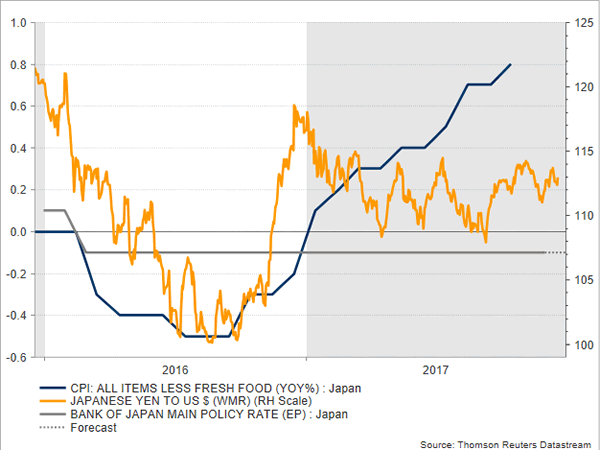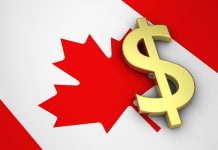Under an ultra-easy monetary policy which aims to hold the 10-year bond yields around zero percent, the Japanese economy has indeed shown signs of recovery in several sectors this year. However, with inflation sharply undershooting the BOJ’s target, policymakers are less likely to change their monetary policy stance at the end of their two-day meeting on Thursday. Still, the latest speech by the BOJ governor signalled that a stimulus reduction is not ruled out in the coming years given that persisting negative rates could have adverse effects on the economy. Therefore, the policy statement and the press conference following the rate decision would be of much interest to investors for clues on future policy adjustments.
Japanese GDP growth has been less volatile in the year-to-date period, with the economy expanding positively the last seven quarters on a yearly basis. Throughout the year, exports were the main contributors to growth as a depreciating currency boosted overseas sales after a year of negative demand, while retail sales supported by low-inflationary pressures rose to two-year high levels. But an aging population held wage growth subdued despite the unemployment rate falling to record low levels and therefore restricted inflation from gaining momentum. Note that in December, the core CPI which is closely watched by the BOJ stood at 0.8% y/y, well off the central bank’s 2% goal. Moreover, it is worthy to note that the government plans to motivate companies to raise wages by offering tax benefits for those who comply and cut benefits for those who abstain from raising wages. The relevant proposal is expected to be sent for an approval to the Parliament by April 1.

Although the BOJ is expected to keep interest rates unchanged at -0.1% on Thursday, a recent speech by the BOJ governor, Haruhiko Kuroda, gave rise to speculation that the central bank might cut stimulus sooner than projected. Kuroda, who previously argued that the bank will do "whatever it takes" to achieve its inflation target, adopted a different approach in Zurich, mentioning the concept of "reversal rates", a situation where low rates harm the banking industry by pressuring banking profits and hence weaken the effects of a loose monetary policy. Therefore, Kuroda is anticipated to support that, besides inflation, financial stability is also a key factor to determine monetary direction. However, he is also expected to suggest that any policy adjustments will not take place until late 2018 or 2019 as his term expires in April and his reappointment has not been confirmed yet. But even if Kuroda decides to step down, Etsuro Honda, a potential dove successor is not anticipated to proceed with stimulus withdrawal.
Looking at forex markets, dollar/yen has been consolidating gains around one-month high levels the past two-weeks, maintaining a bullish picture in the short-term.
Dovish remarks by the BOJ on Thursday could push the pair up to break December’s top at 113.74. Steeper increases though could also target the area around the 114 key level, which has acted as strong resistance in the past.
Alternatively, a hawkish BOJ message could drive the market down to the 112 area where the 50-day moving average also lies. The 200-day moving average at 111.60 could also act as support, while a close below the previous low at 110.83 would shift the bias to bearish.













